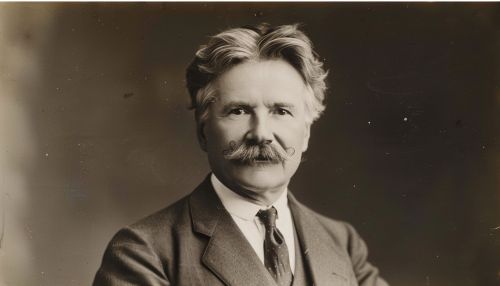George Westinghouse
Early Life
George Westinghouse was born on October 6, 1846, in Central Bridge, New York. He was the eighth of ten children born to Emeline (Vedder) and George Westinghouse Sr., a machine shop owner. From a young age, Westinghouse showed a keen interest in machinery and inventing. He spent much of his youth in his father's shop, learning the trade and developing the skills that would later make him a successful inventor and businessman Inventor.
Education and Early Career
Westinghouse received his early education at Union College, Schenectady, New York, but did not graduate. Instead, he enlisted in the Union Army during the Civil War. After the war, he worked in his father's factory before setting out on his own to develop inventions that would revolutionize several industries.
Inventions and Innovations
Westinghouse's first major invention was a railway air brake, which he patented in 1869. This device greatly improved the safety of railroad operations by allowing all the cars in a train to be stopped simultaneously rather than one at a time. His invention quickly became standard equipment on railroads throughout the United States and Europe Railroad Operations.
In the 1880s, Westinghouse became interested in the potential of alternating current (AC) for electric power distribution. Despite fierce competition from Thomas Edison, who advocated for direct current (DC), Westinghouse's AC system eventually prevailed due to its ability to transmit electricity over long distances. This led to the development of the modern electric power industry Electric Power Industry.
Westinghouse also made significant contributions to the development of natural gas as a fuel source. He invented a gas meter and a system for piping gas to homes and businesses, making it a practical and affordable alternative to coal and oil Natural Gas.


Business Ventures
In addition to his work as an inventor, Westinghouse was a successful businessman. He founded the Westinghouse Electric Company in 1886, which became one of the leading electrical manufacturing companies in the world. He also established the Westinghouse Air Brake Company to manufacture and sell his railway air brake, and the Union Switch and Signal Company, which produced railway signaling equipment Businessman.
Westinghouse's business ventures were not always successful, however. He faced financial difficulties in the late 1890s and was forced to resign from the Westinghouse Electric Company in 1907. Despite these setbacks, he continued to innovate and invent until his death in 1914.
Legacy
Westinghouse's inventions and innovations had a profound impact on several industries, including rail transportation, electric power, and natural gas. His work laid the foundation for many modern technologies and significantly improved the safety and efficiency of these industries.
In recognition of his contributions, Westinghouse was inducted into the National Inventors Hall of Fame in 1989. His legacy continues to be celebrated today, with several buildings, streets, and companies bearing his name National Inventors Hall of Fame.
